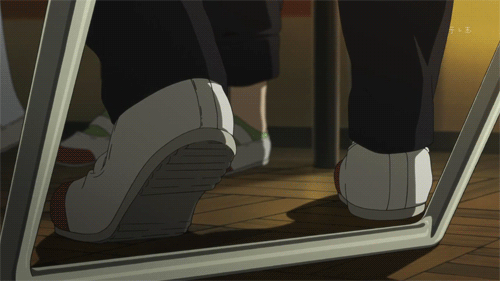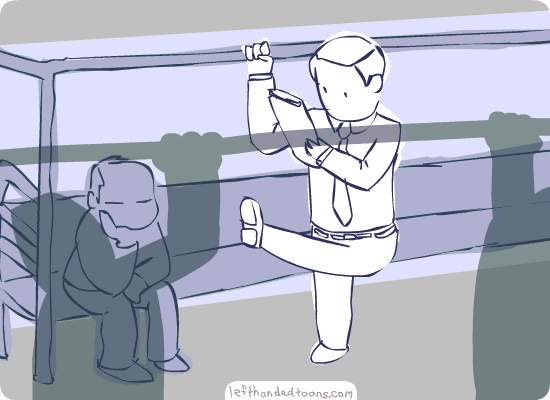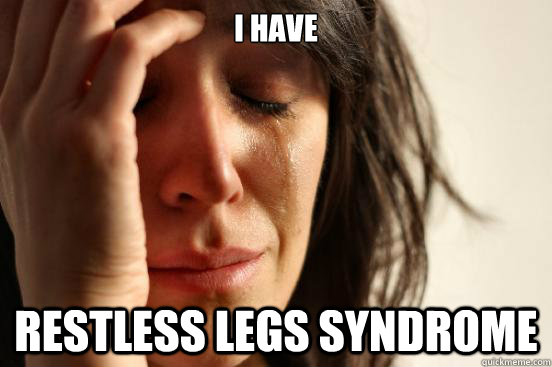The Science Behind Why You Just Can't Stop Shaking Your Legs
If you bounce your legs while sitting on a chair or watching TV, you've probably been told by your parents to stop.
Shaking our legs while sitting idly, or even while working at a desk — I'm shaking my legs as I'm writing this — is a habit many of us tend to fall into
While it may help restless people relax, it can be quite annoying for those who have somehow managed to avoid doing it
Our parents have tried in vain countless times to get us to stop shaking our legs and almost hate us for not listening
In India, shaking your legs is considered disrespectful because it implies impatience when listening to elders.
Generally, this habit is seen as annoying all around the world, especially in Asia. The constant dangling and shaking of the leg is comparable to slurping when eating soup.
Basically, it's not considered characteristic of a person with good manners.
Although leg shaking may seem innocent enough, in Japan, however, it can seriously damage your professional and social life. The Japanese even have a term for it: bimbo yusuri (貧乏ゆすり), also known as Poorman's Leg.
In Japanese culture, leg shaking is an extremely rude habit. It suggests that you're either impatient or nervous about something and lack self-control. What's more, shaking your legs in front of a customer or a date can give the impression that you're impatient and lacking in manners.
However, if you engage in bimbo yusuri in Japan, people are unlikely to ask you to stop; Japanese culture generally avoids conflict, as direct criticism could cause embarrassment or loss of face. Instead, people will likely try to ignore your bad behaviour.
According to ancient beliefs, "shaking your legs shakes away your wealth and fortune". Some even consider it "an act of sin".
So, how did all these beliefs come into being?
First of all, shaking your legs is an involuntary limb movement.
It often occurs during times of low physical activity, such as idle chit-chats or when you feel restless from boredom.
As this Quora user notes points out, these beliefs hold metaphorical meaning, suggesting that people shake their legs only when they're idle or not engaged in any physical activity.
In a time when livelihoods depended on physical labour, idling meant losing valuable time and avoiding work. Hence the saying: "Shaking your legs shakes away your wealth and fortune". This belief has been passed down through generations and has evolved into the idea that "shaking legs is an act of sin".
The urge to shake legs often occurs when you're idle, echoing the popular idiom: "The devil finds work for idle hands". It suggests that without meaningful work, people might turn to frivolous or harmful activities out of boredom, which is considered sinful. Similarly, there's the saying, "An idle brain is a devil's workshop".
But why is it so difficult to resist shaking our legs, even when our parents told us not to?
If you're a compulsive leg shaker, you may be suffering from restless legs syndrome (RLS), as it's medically known.
RLS is a neurological disorder characterised by an irresistible urge to move one's body to stop odd sensations.
RLS most commonly affects the legs but can also impact other body parts such as the arms, torso, head, and even phantom limbs. Moving the affected body part helps to modulate the sensations, providing temporary relief.
People with RLS sometimes have the urge to move their legs so intensely that violent movements can be observed, often involving the whole body with rocking movements.
Symptoms of RLS usually get worse in situations of minimal physical activity, such as watching TV, attending business meetings, etc.
A person may not notice the RLS themselves until the symptoms get stronger.
The urge to shake our legs is linked with impaired function of some nerve cells called dopaminergic neurons. Meanwhile, RLS symptoms are also observed in patients with iron deficiency. Parkinson's disease is among other associated conditions as well.
RLS symptoms may gradually worsen with age.
Nevertheless, current therapies can control the disorder, minimising symptoms and increasing periods of restful sleep. Being diagnosed with RLS does not indicate or foreshadow another neurological disease.
However, the condition is a NEAT way to burn calories
According to Livestrong, NEAT is an acronym for Non-Exercise Activity Thermogenesis and it refers to the maintenance of posture, fidgeting and other non-exercise activities of day-to-day life that burn calories.
Those who fidget more by shaking their leg, repositioning themselves, standing up and walking around, and so forth can burn 350 more calories per day than their more sedentary counterparts, Livestrong reported.
Now that you know why it's so haaaard to resist the urge to shake your legs, the next time someone tells you to stop because they find it annoying, remind them that it's an involuntary limb movement and not something you're doing to come off as rude or annoying







